These 6 Gentle Exercises Actually Reverse Aging Symptoms
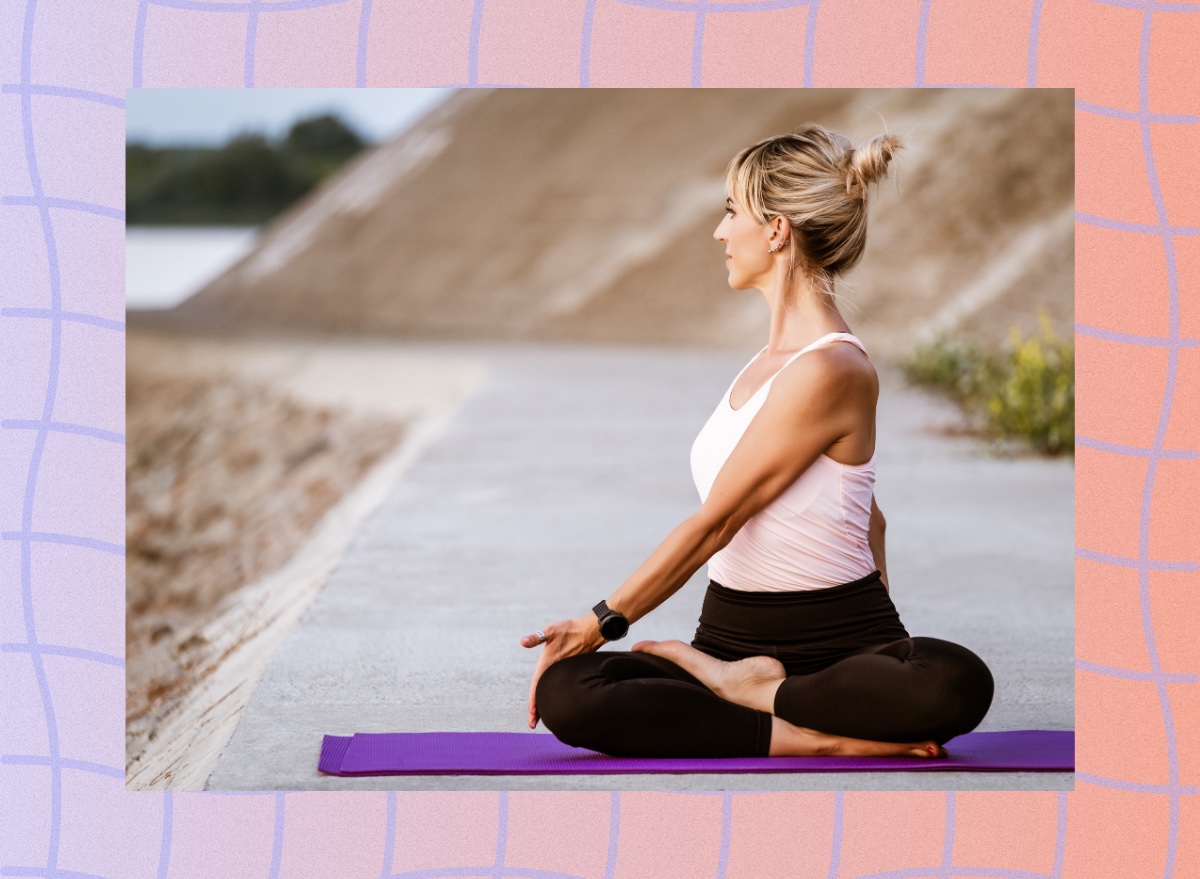
Aging doesn't have to mean slowing down. While the body naturally changes over time, the right exercises can help counteract common aging symptoms such as joint stiffness, muscle loss, reduced balance, and decreased flexibility. Staying active isn't just about looking younger, it's about moving and feeling better every day.
Gentle, low-impact exercises are especially effective in maintaining mobility, strengthening muscles, and improving circulation, all of which contribute to a more youthful, energetic body. By focusing on movements that enhance flexibility, balance, and core strength, you can keep your body resilient and functional well into the later years of life. Best of all, these exercises require no equipment and can be done at home, making them accessible for anyone looking to improve their overall well-being.
The following six exercises are designed to be easy on the joints while still providing maximum benefits. Whether you want to regain strength, improve posture, or increase your range of motion, incorporating these movements into your routine can help you stay active, pain-free, and feeling younger.
The Routine
Perform these exercises in a slow, controlled manner, focusing on deep breathing and good posture. Aim for 2-3 rounds, resting for 30 seconds between each movement.
- Cat-Cow Stretch – 10 reps
- Standing Heel Raises – 15 reps
- Chair-Assisted Squats – 12 reps
- Seated Spinal Twist – 10 reps per side
- Glute Bridge – 12 reps
- Single-Leg Balance – Hold for 20 seconds per side
Repeat for 2-3 rounds, depending on your fitness level.
Exercise Instructions
Cat-Cow Stretch
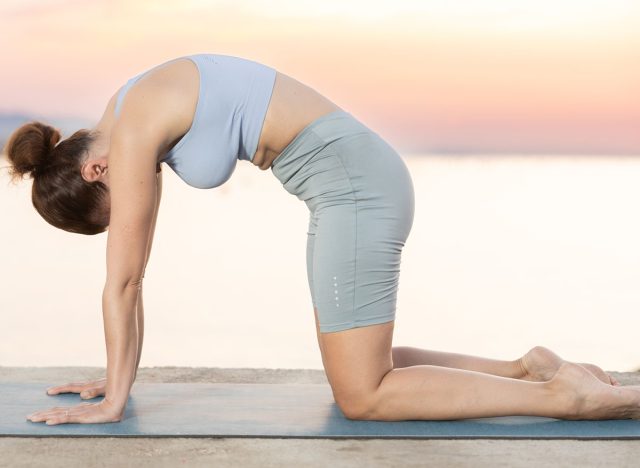
This gentle movement improves spinal flexibility and reduces stiffness in the back, making it an excellent exercise for anyone dealing with joint tightness or lower back discomfort. The Cat-Cow stretch also promotes better posture by increasing mobility in the spine, helping you stand taller and move more fluidly.
How to Perform:
- Begin on all fours with your hands directly under your shoulders and knees under your hips.
- Inhale as you drop your belly toward the floor, lifting your chest and tilting your pelvis forward (Cow Pose).
- Exhale as you round your spine, tucking your chin toward your chest and pulling your belly button inward (Cat Pose).
- Move slowly between these positions, focusing on deep breaths.
- Perform 10 reps, holding each position for a moment to maximize the stretch.
Standing Heel Raises
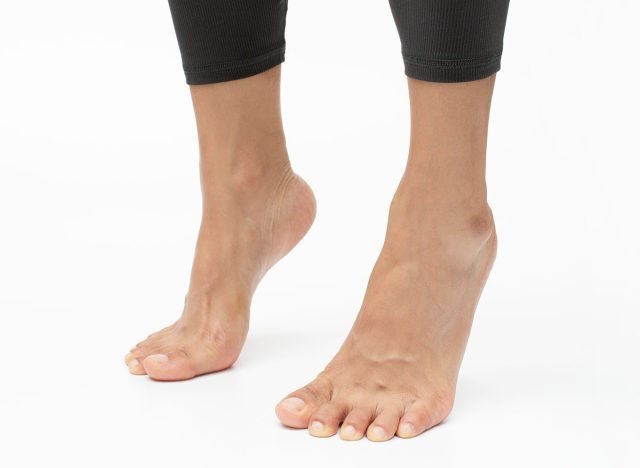
As you age, foot and ankle strength can decline, leading to balance issues and increased risk of falls. Standing heel raises help build stability in the lower legs while improving circulation and strengthening the muscles responsible for keeping you steady on your feet.
How to Perform:
- Stand tall with your feet hip-width apart, using a chair or wall for support if needed.
- Slowly lift your heels off the ground, rising onto your toes.
- Hold for a second at the top before lowering back down in a controlled motion.
- Perform 15 reps, focusing on smooth, steady movement.
Chair-Assisted Squats
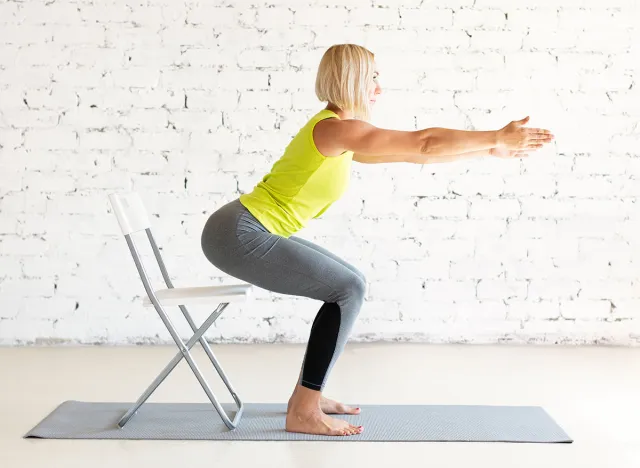
Squats are one of the best exercises for maintaining lower body strength, but they can be difficult for some individuals. Using a chair as support makes this movement more accessible while still working the major muscles in your legs and glutes. Strengthening these muscles improves mobility and reduces strain on the knees and lower back.
How to Perform:
- Stand in front of a sturdy chair with your feet shoulder-width apart.
- Slowly lower yourself down as if sitting, keeping your chest upright and engaging your core.
- Lightly tap the chair with your glutes, then press through your heels to return to standing.
- Perform 12 reps, keeping the movement slow and controlled.
Seated Spinal Twist
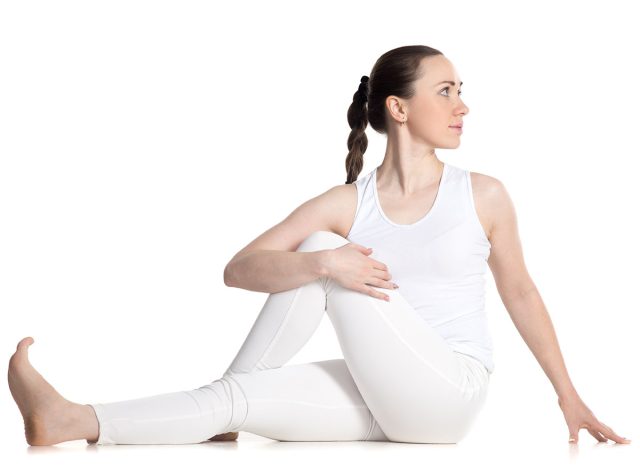
Aging often brings reduced spinal mobility, which can lead to stiffness and discomfort in the back. The seated spinal twist helps maintain flexibility in the spine while relieving tension in the lower back, making it an excellent exercise for improving overall movement quality.
How to Perform:
- Sit tall in a chair with your feet flat on the ground.
- Place your right hand on your left knee and your left hand on the chair behind you.
- Gently twist your torso to the left, looking over your shoulder.
- Hold the stretch for a few seconds, then return to the center and switch sides.
- Perform 10 reps per side, moving with control.
Glute Bridge
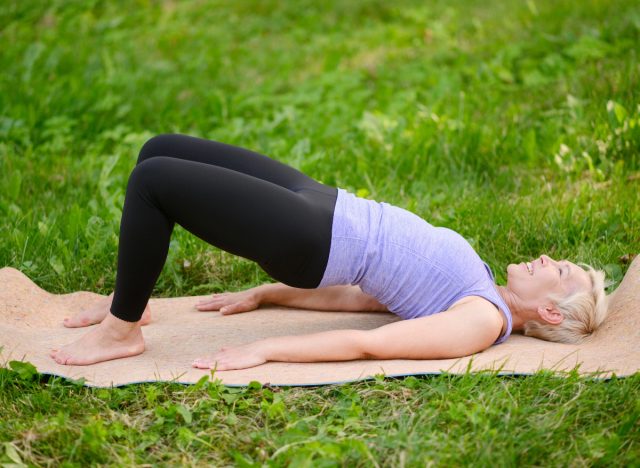
The glute bridge is an essential movement for strengthening the core, lower back, and hips. It also helps counteract the effects of prolonged sitting by activating the glutes and promoting better posture. This exercise is excellent for improving hip mobility, reducing lower back pain, and keeping your core strong as you age.
How to Perform:
- Lie on your back with your knees bent and feet flat on the floor, hip-width apart.
- Press through your heels and lift your hips toward the ceiling, squeezing your glutes at the top.
- Hold for a second before lowering back down with control.
- Perform 12 reps, focusing on engaging your core and glutes.
Single-Leg Balance
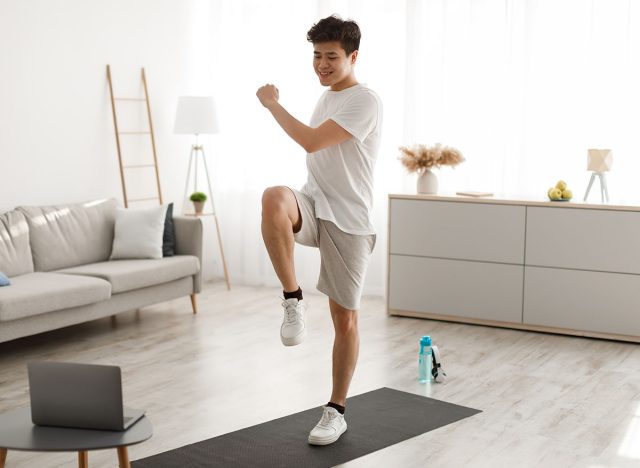
Balance naturally declines with age, increasing the risk of falls and injuries. The single-leg balance exercise strengthens the stabilizing muscles in the legs and core, helping to improve overall stability and coordination. Regular practice of this movement enhances your ability to stay steady on your feet, reducing the likelihood of trips and falls.
How to Perform:
- Stand with your feet hip-width apart and shift your weight onto one foot.
- Lift the other foot slightly off the ground, holding the position for 20 seconds.
- If needed, hold onto a chair for support, but try to rely on your balance as much as possible.
- Switch sides and repeat.
And if you enjoyed this article, don't miss How Long Your Walking Workout Should Be To Shrink Belly Fat.









